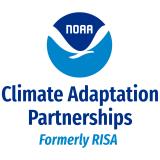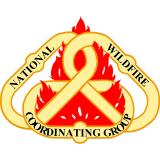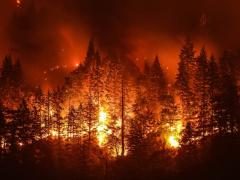For the latest forecasts and critical weather information, visit weather.gov.
Addressing Challenges in Effective Red Flag Warning
A Red Flag Warning (RFW) is a term that has been used since the 1960s by the National Oceanic and Atmospheric Administration (NOAA) National Weather Service (NWS) fire weather forecasters to alert forecast users to an ongoing or imminent critical fire weather pattern. Through time, however, several issues with this system have evolved and created concerns about effectiveness of messaging, including:
- No single quantitative definition of a RFW
- Confusion between a RFW and a NWS Fire Weather Watch
- Issued so frequently that agencies and the public are becoming numb to the product largely because of an increased perception that the warnings are now less meaningful
Overall, there is a concern amongst NWS and fire agency personnel that the Red Flag Warning is not an effective messaging medium. As a result of these issues, the California Nevada Applications Program (CNAP), a NOAA Regional Integrated Sciences and Assessments team, in partnership with NOAA NWS Fire Weather, NIDIS, and the National Wildfire Coordinating Group, Fire Environment Committee, began a collaborative project in 2018 to assess and then develop an improved RFW product that meets the NWS, the fire management community, and public warning needs. In 2019, building off this assessment, the project team received funding from the NOAA CSTAR program to develop a prototype decision matrix.
The project outcome is to improve both consistency and messaging of the RFW product, including improving communication and identifying actions for public and firefighter safety across fire prone areas of the United States. Changing the RFW product has challenges not seen in most other NWS hazard messaging products because it needs to include aspects of both weather and vegetation conditions (which can be linked to drought), and may or may not include the presence of a wildfire.
The project embraces a strong partnership with NWS fire weather staff, interagency wildland fire personnel, researchers from academic and federal institutions, and NIDIS staff to help ensure that the prototype criteria developed reflect the best science and are also rigorously tested before they enter into formal research-to-operations processes.
More information on the project to date can be found in the 2 pager, or by contacting tamara.wall@dri.edu or tim.brown@dri.edu. NIDIS is continuing to provide support to the project team to develop scenarios to test the CSTAR prototype criteria and messaging with NWS Weather Forecast Offices and stakeholders (i.e., fire managers, emergency managers, media outlets), beginning with California and Nevada. More information on NIDIS efforts related to wildland fire can be found in the NDAWN strategy.
The full report can be accessed here - Red Flag Warnings








